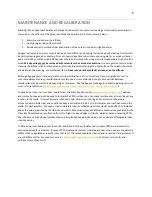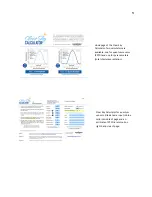
INTRODUCTION
Radiation that drives photosynthesis is called photosynthetically active radiation (PAR) and is typically defined as
total radiation across a range of 400 to 700 nm. PAR is often expressed as photosynthetic photon flux density
(PPFD): photon flux in units of micromoles per square meter per second (µmol m
-2
s
-1
, equal to microEinsteins per
square meter per second) summed from 400 to 700 nm (total number of photons from 400 to 700 nm). While
Einsteins and micromoles are equal (one Einstein = one mole of photons), the Einstein is not an SI unit, so
expressing PPFD as µmol m
-2
s
-1
is preferred.
The acronym PPF is also widely used and refers to the photosynthetic photon flux. The acronyms PPF and PPFD
refer to the same variable. The two terms have co-evolved because there is not a universal definition of the term
“flux”. Some physicists define flux as per unit area per unit time.
Others define flux only as per unit time. We
have used PPFD in this manual because we feel that it is better to be more complete and possibly redundant.
Sensors that measure PPFD are often called quantum sensors due to the quantized nature of radiation. A quantum
refers to the minimum quantity of radiation, one photon, involved in physical interactions (e.g., absorption by
photosynthetic pigments). In other words, one photon is a single quantum of radiation.
Typical applications of quantum sensors include incoming PPFD measurement over plant canopies in outdoor
environments or in greenhouses and growth chambers, and reflected or under-canopy (transmitted) PPFD
measurement in the same environments.
Apogee Instruments MQX series quantum meters consist of a handheld meter and a dedicated quantum sensor
that is integrated into the top of the meter housing (MQ-100X) or connected by cable to an anodized aluminum
housing (MQ-200X). Integrated and separate sensors consist of a cast acrylic diffuser (filter), photodiode, and are
potted solid with no internal air space. MQX series quantum meters provide a real-time PPFD reading on the LCD
display and offer measurements that determine the radiation incident on a planar surface (does not have to be
horizontal), where the radiation emanates from all angles of a hemisphere. MQX series quantum meters include
manual and automatic data logging features for making spot-check measurements or calculating daily light integral
(DLI).





































